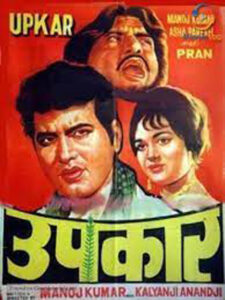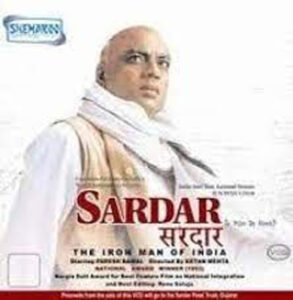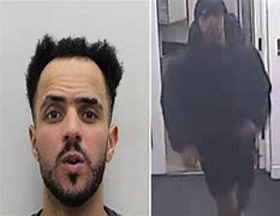


This year, India completes 75 years of independence, which the country is observing as Azaadi ka Amrit Mahotsav. And the Indian film industry will do its bit by launching new films on the theme of the freedom struggle and freedom fighters. Interestingly, though the first major film on the freedom struggle that most people remember was made by a foreigner – Gandhi by Richard Attenborough in 1982 with Ben Kingsley in the title role (apart from some fiction films made even earlier touching on the freedom struggle), filmmakers had attempted even before the country got its freedom to rouse the people against
In fact, the British Government had set up a Censor Board as early as 1916 primarily to prevent filmmakers from making films either speaking the British rulers or encouraging people to rise against the rulers.
But Indian filmmakers found their own ways to awaken the people against British yoke. Films by makers like V Shantaram with ‘Sairandhri’, Nitin Bose with ‘England Returned’ (starring K L Saigal as an England-educated Indian who is ridiculed for his British mannerisms) and ‘My Sister’, Babu Rao Painter with ‘Savkari Pash’, and K Subrahmanyam whose ‘Thyagbhoomi’ was banned, are examples of this.
The Censor objected to use of the word ‘Swaraj’ in the title of Shantaram’s film Svarajyache Toran (Thunder of the Hills) and the poster of the film depicting Chhatrapati Shivaji hoisting a flag, But the British Indian Censor Board agreed to removal of a few scenes and Shivaji carrying the flag and the film was released under the title Udaykaal.
Over twenty films were released between 1921 and 1947 that obliquely depicted the British as the villain. The British-Indian censors made every possible attempt to throttle such messages. Even earlier, in the silent era in 1921, the character Vidur’s tell-tale ‘topi’ (cap) and the charkha (referred to as the Wheel of Fortune) in Bhakt Vidur (1921) led the film to be banned. The British censors interfered once again, ordering the removal of documentary footage of Vallabhbhai Patel making a speech about abstinence. Brandy ki Botal (1939) criticized liquor consumption and exhorted Gandhian morality while Ghar ki Rani (1940) showed the dire consequences of aping western traditions.
Taking advantage of the British’s unfamiliarity with Hindi, Apna Ghar (1942), Naya Tarana (1943), Prem Sangeet and Amar Jyoti (1936) featured lyrics that the British would have termed inflammatory, had they understood. Charkha Chalao Behno (Spin the wheel) in Aaj ka Hindustan (1940) and Kavi Pradeep’s fiery Chal re Naujawan from Bandhan (1940) and the cheeky Door Hato ae duniyawalon Hindustan Hamara hai from Kismet (1943) were directly speaking to the Indian masses. For the Kismet song, arrest warrants were issued against Kavi Pradeep and composer Anil Biswas, though the order was withdrawn when the Censor was told that the song referred to Germany and Japan.
Vijay Bhatt’s ‘Ram Rajya’ (the only film that Mahatma Gandhi is believed to have seen) in 1942 had a song where Luv Kush are relating the story of Sita in the presence of Lord Rama, without knowing he is their father, which starts with “Bharat ki ek sannari ki hum katha sunate hain’ with a direct reference to Mother India and the problems heaped on her. Early in1940, British censors allowed composer Anil Biswas and lyricist Pradeep to get away with the highly volatile song “Aaj Himalaya ki choti se phir hum ne yeh lalkara hai/Dur hato, dur hato ae duniya walo Hindustan hamara hai…” as the film ‘Kismat’ made in 1943 was not based on the freedom movement,

After independence, there were some fiction films in the early years which touched upon the freedom struggle or partition. But it was only from the sixties that filmmakers attempted to touch on either the real stories of partition and the freedom struggle or British atrocities. And filmmakers like Manoj Kumar attempted to make films that aimed through stories either to emphasize Indian values or the greatness of Indian values. His film Purab aur Paschim had several songs like ‘Dulhan chali, O pahan chali teen rung ki choli’ (referring to the Indian tricolour), ‘Bharat ka rehne wala who Bharat ki baat sunaata hoon’ which also extolled the fact that it was an Indian who first invented ‘zero’ and ‘decimal point’, Mahatma Gandhi’s favorite ‘Raghupati Raghav Raja Ram’, and the prayer song ‘Om Jai jagdish hare’. He also made Upkar with the song ‘mere desh ki dharti sona ugle’. In 1981 he made Kranti starring among others Dilip Kumar and Shashi Kapoor which was partly based on real groups of Indians who were attempting to battle the British. Earlier in 1954, Kavi Pradeep had written songs for Jagriti with one song paying tribute to Mahatma Gandhi – ‘De di humme azaadi bina khadak bina dhal’ – and another about the greatness of India – ‘Aao bache tumhe dikhaye jhanki Hindustan ki, is mita se tilak karo yeh dharti hai balidaan ki’ and ‘Hum laaye hain toofan se kishti nikal ke, iss desh ko rakhna mere bacho sambhal ke’.
Later years brought films like ‘Gandhi my father’, the film ‘Earth 1947’ made by Canada-based filmmaker Deepa Mehta, ;Jalianwala Bagh’ in 1977 on the tragic mass killing of Indians in Jalianwala Bagh in Amritsar by the British police, five different films in different times on Shaheed Bhagat Singh who had along with other freedom fighters embraced execution for their attempt to rouse Indians by throwing small bombs in Parliament House, Shaheed Udham Singh on the revolutionary who travelled to England to kill the British officer Michael O’Dwyer who had ordered the firing on Indians in Jalianwala Bagh in 1919,

Ketan Mehta made ‘Mangal Pandey’ starring Aamir Khan who produced the film on the first war of independence in 1857, which were followed by films on Bahadurshah Zafar and Rani Laxmibai of Jhansi who also were victims of British atrocities in the 1857 struggle. Aamir Khan also made the very popular ‘Lagaan’ which is a fictional film, in 2001, and ‘Rang de Basanti’ where he attempted to show slices from the historical struggle to relate them to the need to continue the fight against corruption and bad leadership.

Films have also since been made on freedom fighters like ‘Stardar’ on Sardar Vallabhbhai Patel, ‘Netaji Subhash Chandra Bose: the forgotten hero’, ‘Main Khudiram Bose hoon’ in 2017, Veer Savarkar, Dr Babasaheb Ambedkar, Jawaharlal Nehru by Shyam Benegal who also made ‘The Making of the Mahatma’ about Gandhi in South Africa and a television series on ‘Discovery of India’ on a book by Nehru on the 5000-year-old history of India. Films on patriotism continue to be made, but these are either aimed against corruption, or against Pakistan or China.

Tirlok Malik, the Emmy nominated filmmaker from New York says “Patriotic movies will always have a special place in the heart of every Indian, no matter where they live .These movies make Indians cry, laugh, and indulge in immense pride. A lot of magic happens with images and songs, a lot more than one can imagine.’
The maker of films like ‘Lonely in America’ and a line producer for many Indian films shot in the United States apart from films like Babasaheb Ambedkar in which he acted, he says: “It’s the 75th year now, which is being celebrated in a big way all over the USA , with parades, Flag hoisting events and having the presence of many Indian Film stars from India at these events.’ So, he considers films on the independence struggle as a salute to celebrating and showing the history of the independence struggle in Indian Movies.
( The author is an eminent Film and TV critic. A Consultant for some media websites and print publications , he is also a visiting professor in several institutions on journalism, public relations, and cinema studies. He can be reached at bbnagpal@yahoo.com)





Be the first to comment